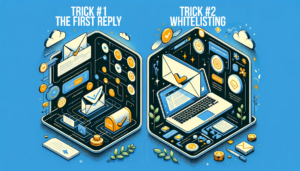If you’ve noticed that your website hasn’t been getting as much traffic lately, then you might need some help tracking the proper marketing metrics.
Even startups need to track the most common digital marketing metrics. This is the easiest way for startups to have marketing success and build a brand that people will remember.
But if you’re just starting, it might be hard to know where to begin. That’s why we put this helpful article together.
Keep reading to learn more about the metrics your startup should be using today.
1. Bounce Rate
Bounce rate is the number of visits to a website that resulted in one single page view.
A high bounce rate might state that your digital marketing strategy is failing. Depending on the type of digital marketing, it can be calculated or estimated.
Startups should care about this metric because it tells you how effective your content is. If people were finding what they were looking for, they would not leave as quickly as they have been.
2. The Conversion Rate of Both Organic and Paid Traffic
The conversion rate is considered a digital marketing metric critical to your startup’s growth. It’s the ratio of unique visitors, over time, who convert into leads or customers.
The conversion rate is one that you’ll often want to use to measure your startup’s digital marketing success. It should be defined as the “percentage of visits that result in X” where X can be a sale or another desired action on your part.
Startups care about conversion rate because it helps them get more results from digital marketing efforts. The numbers and results will be an accurate way for startups to see whether digital marketing is working for them at all.
3. Web Traffic (Total Visitors)
Web traffic refers to the different digital marketing channels that you are using and how well they work. For instance, are you currently using Twitter in your digital marketing strategy? Or Facebook ads? Web traffic can help you measure which digital channels are doing better than others.
Increasing website traffic can include looking at:
- Social Media (Facebook, Twitter, etc)
- Organic Search (SEO rankings & keywords)
- Referral Links (links from other websites)
4. Average Time on Site
This common digital marketing metric tells you how much time an average person is spending on your website.
The longer someone spends on your website, the more likely they are to do something else such as buy a product or subscribe to an email newsletter. Websites with high-quality content tend to generate more sales because they keep the person’s attention for a long period of time.
In digital marketing, visitors who spend a long time on your website are also known as “sticky” visitors.
Startups should care about the average time on site because it can help them increase digital marketing results by providing better content to users. It can be difficult for a startup to track this digital marketing metric, but it’s possible with the right digital marketing tool.
5. Click-Through Rate
Click-through rate is a common digital marketing metric that tells you how many people have clicked on your ad or banner (i.e., advertisement), which directs them to a specific URL.
For example, if someone sees an ad for a digital marketing consultant in NYC and then clicks on the ad, this person would be tracked as one click-through-rate visitor. If 10 people see an ad but only two of them are interested enough to follow through, then the click-through rate is 20%.
Startups should care about digital marketing click-through rate because it tells you whether people are interested in your content, offers, and CTAs.
6. Customer Lifetime Value
Customer lifetime value (or CLV) is an important digital marketing metric. Digital marketers use CLV to determine how much money they should spend on digital marketing campaigns.
For example, a digital marketer may know that if he spends $500 on social media marketing with Facebook ads and only gets 10 new leads from this campaign, his cost per lead is $50. But, he may not know the lifetime value of these 10 leads. If these leads turned out to be some of the most profitable customers that digital marketer has ever had, then it would have been worth spending $50 each for those leads because their lifetime values are higher than this number. Digital marketers typically measure CLV from monthly recurring revenue (MRR).
Startups should care about CLV because digital marketers are trying to maximize their profits and revenue over time. Digital marketers want to know which strategies generate the most customers that end up spending more money in the long run.
7. Customer Acquisition Cost
Customer acquisition cost (CAC) is a metric digital marketers use to measure how much it costs their business to get new digital marketing customers.
For example, if a digital marketer spends $500 on digital advertising per month and hires three employees who manage the campaign for a salary of $250 each ($750 per employee), this digital marketer’s CAC is $1,000 each month. This is because he spent around 10% of his revenue on digital marketing campaigns (i.e., customer acquisition costs).
The digital marketer could decrease the customer acquisition cost by hiring four employees to do digital marketing campaign management. For example, if the marketer spends $1,000 per month ($500 in digital advertising and $250 in employee salary) but hires four employees to handle it for him at $250 each, then his CAC is still $1,000 per month. But, he now has digital marketing employees working on his digital marketing campaigns instead of digital marketers doing it themselves.
Startups should pay attention to digital marketing CAC because it helps digital marketers determine how much they need to spend on digital marketing campaigns to generate new leads, which means more revenue for the digital marketer’s business.
8. Return on Ad Spend
Return on ad spend (or ROAS) digital marketers use to measure how much digital marketing revenue they generate from digital advertising.
For example, if this digital marketer spends $500 per month for digital advertising and earns $1,200 in digital marketing revenue, he will have a return of 200% for that month’s digital marketing campaign. And the current ROAS ratio would be 4:1 ($1200/$500).
When measuring your metrics for marketing, pay close attention to the digital marketing KPIs that best help them measure their digital marketing performance and digital marketing ROAS.
Startups should care about digital marketing ROAS because digital marketers’ digital advertising spend is typically directly linked to your startup’s revenue. Startups will want digital marketers to get digital marketing leads and digital marketing customers to maximize digital marketer’s digital advertising spend, which can lead to more revenue for your business.
Start Measuring Common Digital Marketing Metrics
The most common digital marketing metrics are important for every company, including startups.
Startups need to have a digital marketer on their team who knows how to measure digital marketing KPIs and take actionable steps. And hopefully, these eight metrics are a good jumping-off point for your team.
Have questions? Contact us for a quick 15-minute consultation.





















